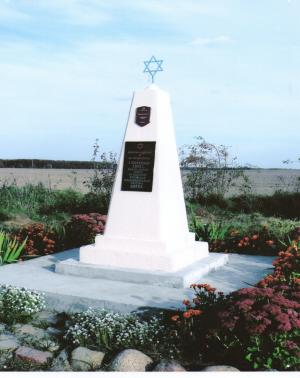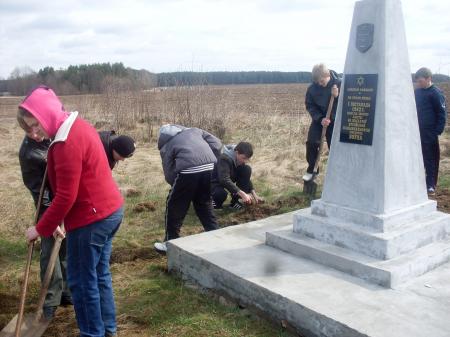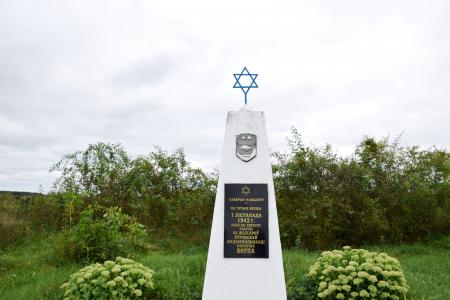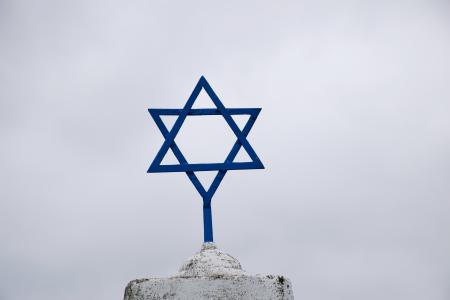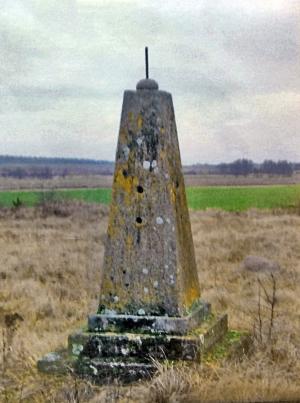Obj. ID: 32677
Jewish Funerary Art Holocaust Monument at the Killing Site in Former Jewish Cemetry in Voŭpa (Volpa), Belarus, 1960s, 2018
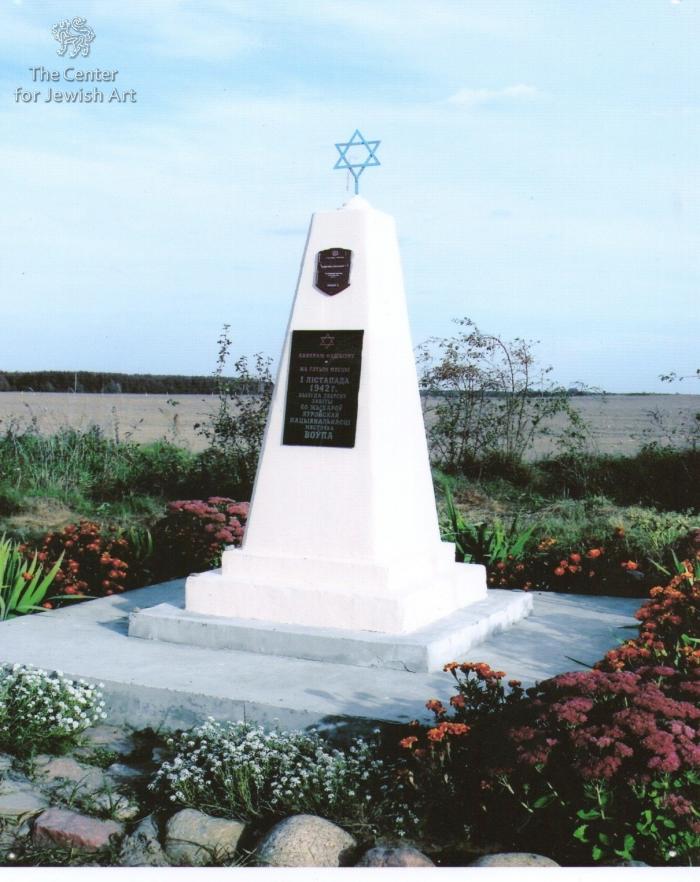
Memorial name
No official name.
Who is Commemorated?
60 Jewish Holocaust victims from Voŭpa (Volpa), killed on November 2, 1941.
Description
The monument is erected at the killing site/mass grave of the Voŭpa (Volpa) in the former Jewish cemetery.
The monument is shaped like a two-stepped obelisk standing on the base, which, in turn, is erected on the concrete podium. The obelisk is crowned by the Magen David.
The monument bears a memorial plaque with a Belorussian inscription and the Star of David.
Inscription
In Belarusian:
Ахвярам фашызму
На гэтым месцы
2 лістапада
1941 г.
Былі па зверску
забіты
60 жыхароў
яўрэйскай
ацыянальнасці
мястэчка
Воўпа
Translation: To the victims of fascism. / In this place, / on November 2, / 1941, / 60 Voŭpa residents of Jewish ethnicity, were brutally killed.
Commissioned by
Evdokim Petukhov, the Belorussian chairman of the local collective farm and a former partisan.
sub-set tree:
On July 1, 1941, after a day of aerial bombardment, German troops entered Voŭpa (Volpa) [Yad Vashem: The Untold Stories]. An open ghetto was established in an area of the town soon after it [The Map of Holocaust by Bullets: Yahad-In Unum].
On November 2, 1942, the Germans assembled all the Jews of the town in the church square for resettlement to a labor camp [Yad Vashem: The Untold Stories]. From them, the Nazis selected 60 very elderly and infirm individuals and executed them in a pit dug in advance close to the Jewish cemetery [The Map of Holocaust by Bullets: Yahad-In Unum]. According to witnesses interviewed by Yahad - In Unum, these Jews were transported by local inhabitants, who were requisitioned with their carts. It appears that these Jews were killed by local policemen.
In the 1960s, during the reconstruction of Voŭpa (Volpa), Evdokim Petukhov, the Belorussian chairman of the local collective farm, who was a former partisan, decided to commemorate the Jews killed by the Nazis in the town. The present obelisk was erected at the former Jewish cemetery. However, in 1967, under the impact of the Six-Day War in the Middle East, the authorities ordered the works to be halted. Only in 2018 was the obelisk restored upon the initiative of the local history museum, and a glass plaque, which had been made back in the 1960s, was affixed to it [Yad Vashem: The Untold Stories]. On the monument, there is also another plaque indicating that it stands at the military burial site protected by law:
In Belarusian
Рзспублiка Беларусь
Воiнскае пахаванне
Прычыненне шкоды
караецца па
закону
[no. ?]
Translation: The Republic of Belarus / The military burial site / Infliction of harm / is punishable by law.
Today the obelisk is the place of the commemorating ceremonies.
"Execution of Jews in Volpa,"
The Map of Holocaust by Bullets, Yahad-In Unum, https://www.yahadmap.org/en/#village/volpa-grodno-belarus.485.
"Wolpa,"
Untold Stories - Murder Sites of Jews in Occupied Territories of the USSR (Yad Vashem project), https://collections.yadvashem.org/en/untold-stories/community/14622425.


